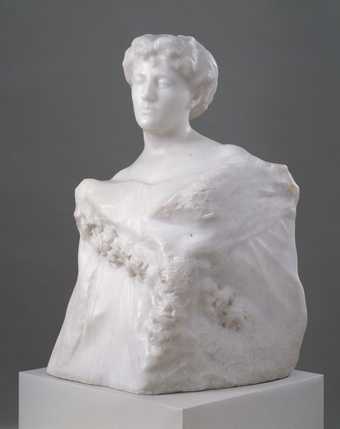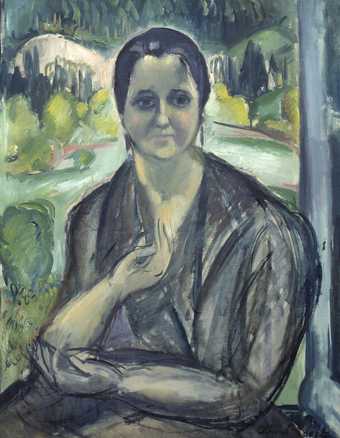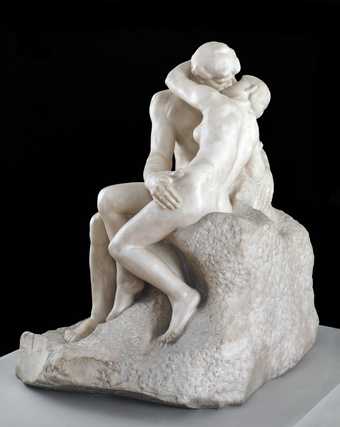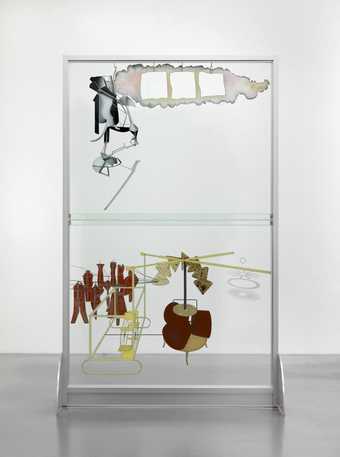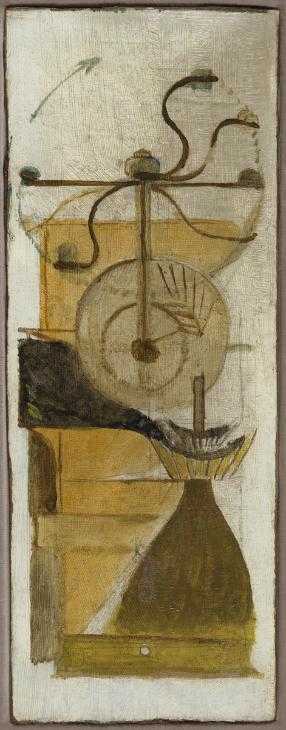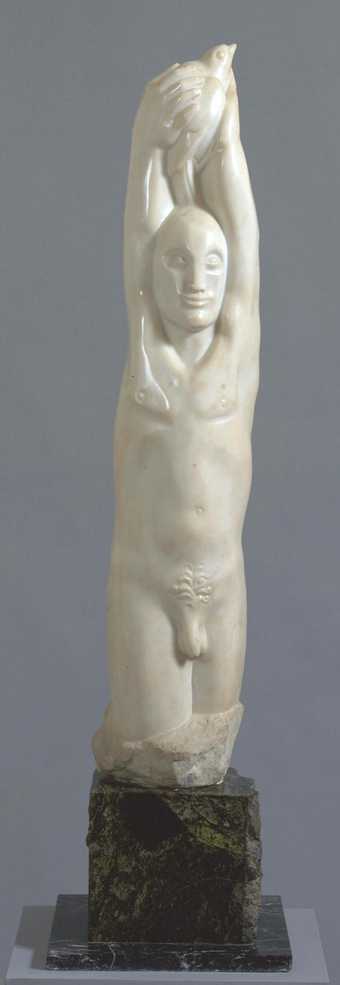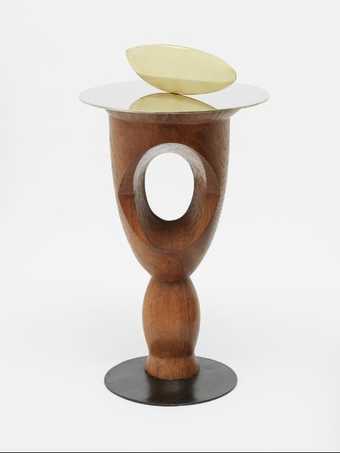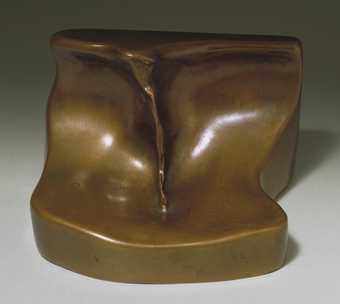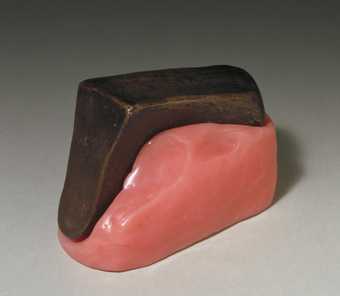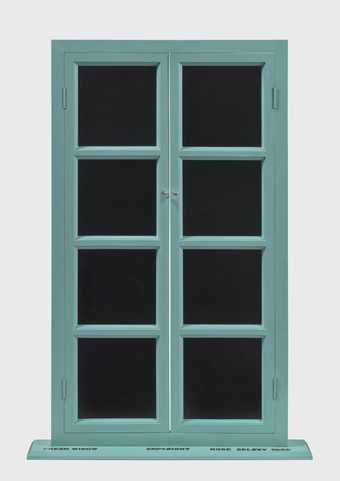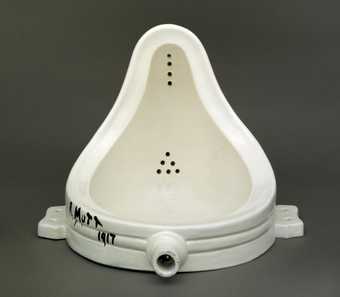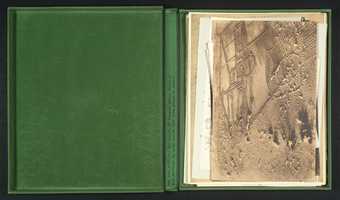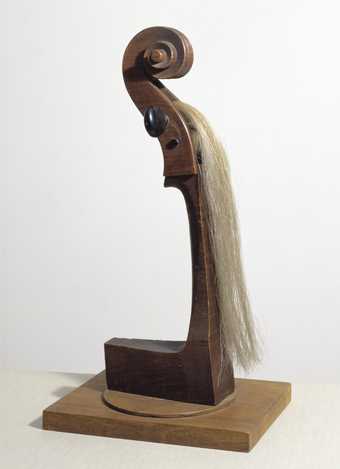Not on display
- Artist
- Marcel Duchamp 1887–1968
- Medium
- Wood, metal, marble, cuttlefish bone, thermometer and glass
- Dimensions
- Unconfirmed: 114 × 220 × 160 mm
- Collection
- Tate
- Acquisition
- Purchased 1999
- Reference
- T07508
Summary
Why Not Sneeze Rose Sélavy? consists of a small bird cage, fitted inside with four wooden bars, containing a thermometer, a cuttlefish bone and one hundred and fifty two marble cubes cut to resemble sugar lumps. On the underside of the cage, in black paper-tape letters, the title and date of the work have been affixed, with each word placed on a separate line:
NOT
SNEEZE
ROSE
SELAVY? 1921
Duchamp shed some light on the mysterious title of Why Not Sneeze Rose Sélavy? during a French television interview in 1963: 'You don't sneeze at will; you usually sneeze in spite of your will. So the answer to the question "Why not sneeze?" is simply that you can't sneeze at will!' (quoted in Schwarz, pp.690-1.) The art historian Jerrold Seigel has also suggested that the line by line spacing of the title makes it read with the 'jerky, stop-and-start rhythm we all know from feeling the approach of a sneeze' (Seigel, pp.170). This temporal aspect links the sculpture to Duchamp's major work The Bride Stripped Bare by her Bachelors, Even 1915-23 (also known as The Large Glass, Tate T02011), which he described as a 'delay in glass'.
The Large Glass was concerned with a mechanised sexuality and Duchamp's comments about Why Not Sneeze Rose Sélavy? also point towards sneezing as a metaphor for erotic arousal. 'There's the marble with its coldness and this means that you can even say you're cold, because of the marble, and all the associations are permissible', he said in 1963 (quoted in Schwarz, pp.690-1). Although the interpretation of sneezing as a reference to orgasm implies the title can be read as a sexual invitation, the marble cubes suggest frigidity, and the birdcage can be seen as an image of confinement. As Seigel has suggested: 'The implied answer to the question is that R[r]ose prefers the state of permanent anticipation that is not sneezing to the release of tension the small explosion would bring: because eros is desire, delay is the only state in which it survives undiminished.' (Seigel, p.171.)
Duchamp made the original version of Why Not Sneeze Rose Sélavy? in New York in response to a commission from Dorothy Dreier, sister of Katherine S. Dreier, one of his most important American collectors. Dorothy Dreier paid Duchamp $300 to make any work he wished. However, neither she nor her sister liked Why Not Sneeze Rose Sélavy?, and it remained unsold in the hands of a dealer until the 1930s. In 1936 it was included in an important exhibition of Surrealist objects held at the Galerie Charles Ratton, Paris. Alfred Barr, Director of the Museum of Modern Art, New York, saw the work there, and asked to borrow it for his exhibition Fantastic Art, Dada and Surrealism, which began in December of the same year. In order to comply with customs regulations, the forwarding agent rubber-stamped 'Made in France' on each of the marble cubes. Soon after Barr's exhibition, Why Not Sneeze Rose Sélavy? was purchased by Walter Arensberg who later gave it to the Philadelphia Museum of Art, where it remains today.
The first replica of Why Not Sneeze Rose Sélavy? was made in 1963. A year later an edition of eight replicas, of which Tate's work is number seven, was made in Milan under the supervision of the artist using photographs and other documentation relating to the original work. In addition, there were three replicas made outside the edition for the artist, the publisher and the Museum of Modern Art, New York. The replicas are identical to the original in all but two ways: the marble cubes are not rubber-stamped and, on Duchamp's authorisation, the paper-tape title, signature and date have been reversed so that they read correctly when seen in a mirror.
Sophie Howarth
April 2000
Further reading:
Dawn Ades, Neil Cox and David Hopkins, Marcel Duchamp, London 1999, p.164, reproduced in colour
Arturo Schwarz, The Complete Works of Marcel Duchamp, revised and expanded edition, New York 1997, pp.690-1, reproduced
Jerrold Seigel, The Private Worlds of Marcel Duchamp, Berkeley and London 1999, pp.168-171, reproduced p.170
.
Does this text contain inaccurate information or language that you feel we should improve or change? We would like to hear from you.
Display caption
To make this work, Duchamp filled a small wire birdcage with blocks of white marble cut to the same dimensions as sugar cubes. Rose Sélavy is a pun on Eros c'est la vie ('love is life'), and sneezing may be a coded reference to orgasm, making the title a sexual invitation. However, the thermometer, the cold marble, and the whiteness of the cage and cuttlebone all suggest frigidity. The birdcage is a symbol of confinement, and perhaps suggests the suppression of erotic climax.
Gallery label, March 2003
Does this text contain inaccurate information or language that you feel we should improve or change? We would like to hear from you.
Explore
- emotions, concepts and ideas(16,416)
-
- emotions and human qualities(5,345)
-
- love(516)
- formal qualities(12,454)
-
- found object / readymade(2,631)
- universal concepts(6,387)
- characters(438)
-
- Rose Sélavy(1)
- food and drink(980)
-
- sugar(6)
- mirror(241)
- cage(54)
- sex and relationships(833)
-
- sex(557)
You might like
-
Auguste Rodin Mrs Charles Hunter
1906 -
Othon Friesz Woman at a Window
1919 -
Auguste Rodin The Kiss
1901–4 -
Marcel Duchamp The Bride Stripped Bare by her Bachelors, Even (The Large Glass)
1915–23, reconstruction by Richard Hamilton 1965–6, lower panel remade 1985 -
Marcel Duchamp Coffee Mill
1911 -
Maurice Lambert Man with a Bird
1929 -
Constantin Brancusi Fish
1926 -
Marcel Duchamp Female Fig Leaf
1950, cast 1961 -
Marcel Duchamp Dart Object
1951, cast 1962 -
Marcel Duchamp Wedge of Chastity
1954, cast 1963 -
Marcel Duchamp Fresh Widow
1920, replica 1964 -
Marcel Duchamp 3 stoppages étalon (3 Standard Stoppages)
1913–14, replica 1964 -
Marcel Duchamp Fountain
1917, replica 1964 -
Marcel Duchamp The Bride Stripped Bare by her Bachelors Even (The Green Box)
1934 -
Man Ray Emak Bakia
1926, remade 1970


